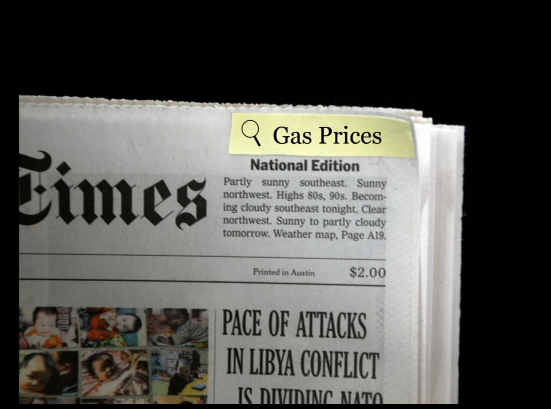
Screenshot from student project Evolution, Not Revolution by Lacey Teer
Last semester, I wrote my final blog post about using iMovie in the classroom. This semester, I attempted to correct some of the issues that arose when I asked all my students to use multimodal argumentation for their final papers. What follows is an outline of the final project I assigned and information about the changes I made to address various problems. This information will also appear on our "Teaching" page, along with sample student projects.
Assignment
Students were allowed to make their final argument in whatever means they felt was most effective. This decision allowed students to make decisions based at least in part on their individual skill sets. Students were given specific standards for their argument that applied regardless of its form; for example, they were required to designate an audience and place of publication, use the rhetorical appeals discussed in class to persuade that audience, and construct an argument that added something to the conversation they had been studying all semester. There were also specific warnings about what was appropriate--or, rather, inappropriate--for multimodal assignments. Students were warned not to turn in a single picture with words on top of it because that would not show the appropriate effort or skill.
Preparation
Because this was a unit-long assignment, students had a lot of preparation. Our in-class preparation focused mostly on multimodal argumentation because it was the least familiar and because, after receiving project proposals, I realized that all but a few students were making a multimodal text. There was also a fair amount of overlap; we could sometimes talk about both in the same class. We spent class time learning iMovie, the basics of Photoshop, and talking about the rhetorical power of sound. We looked at a variety of sample projects, some by actual students (from my previous class and other classes) and some that were created in other contexts, to talk about their effectiveness.
Assessment
These will be graded according to the successful execution of the standards listed on their assignment sheet.
Feedback
While I have not received feedback from students on this project, leaving the project open (rather than forcing students to argue a certain way) seems to have been a good decision. The quality of projects already appears higher, and I am sure the arrangement is less stressful for students. The purpose of this assignment is to encourage students to think about the available means of persuasion, including the various media available to them, and then use them to make an effective argument. I hope that this assignment has given students a chance to reflect not just on persuasive strategies, but on the advantages and pitfalls of various media for making specific arguments.

Recent comments
2 years 29 weeks ago
2 years 44 weeks ago
2 years 44 weeks ago
2 years 50 weeks ago
3 years 4 weeks ago
3 years 4 weeks ago
3 years 4 weeks ago
3 years 6 weeks ago
3 years 6 weeks ago
3 years 6 weeks ago